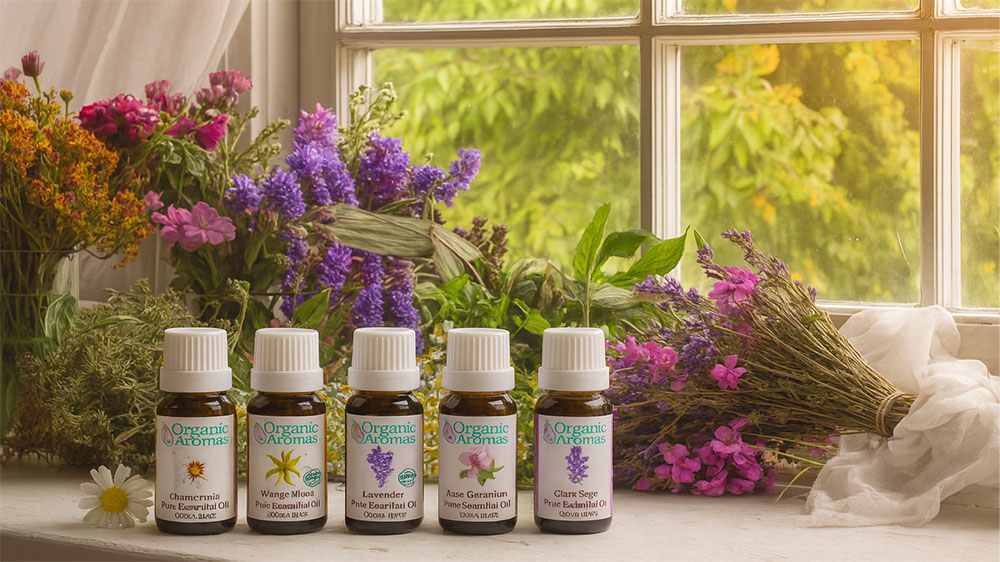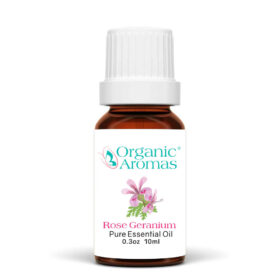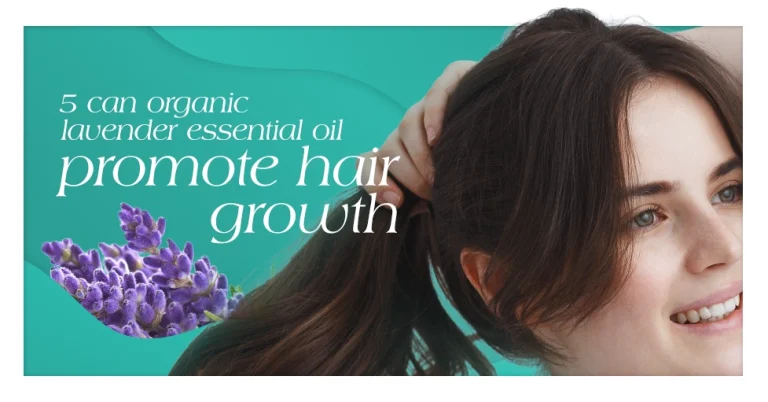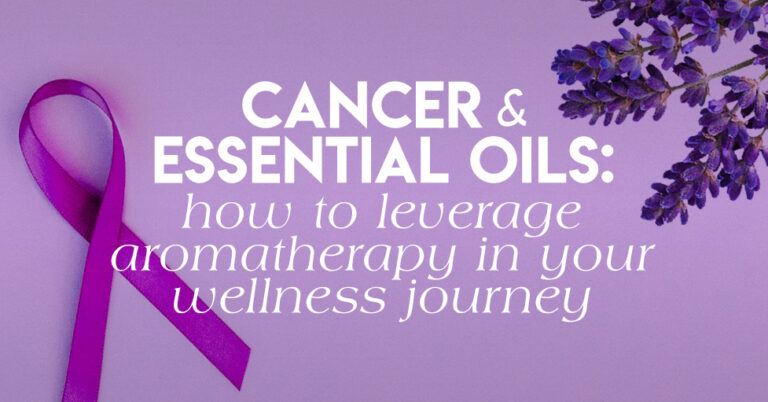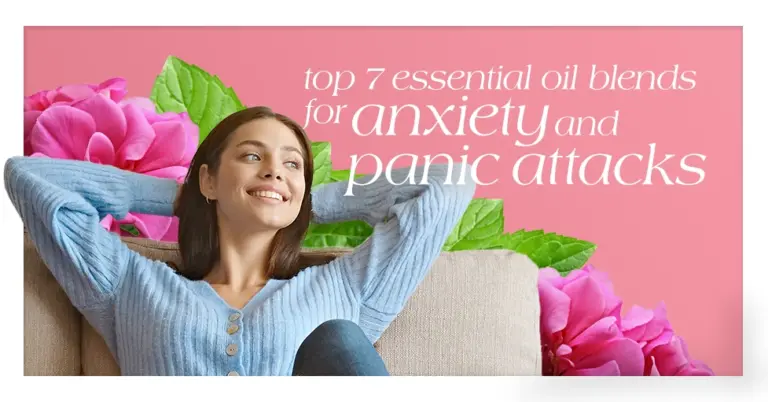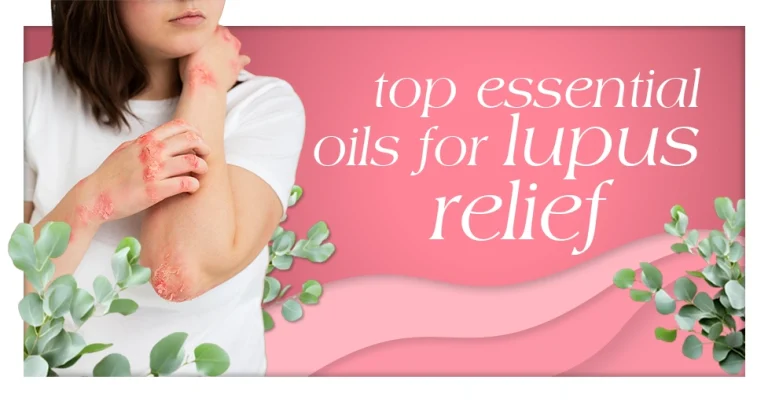7 Floral Essential Oils: Natural Emotional Support for Stress, Anxiety, and Inner Balance
Flowers have long been symbols of healing, beauty, and emotional transformation. But beyond their visual charm lies a deeper power- their essential oils. Floral essential oils are among nature’s most profound tools for emotional healing. With just a few drops, they can soothe stress, restore inner peace, and gently guide the nervous system toward balance.
Whether you’re looking for the best floral essential oils for anxiety, emotional trauma, mental clarity, or simply want to feel more grounded in daily life, oils like Helichrysum, Neroli, Rose Geranium, Clary Sage, Lavender, and Chamomile offer reliable, natural support.
Why Floral Essential Oils Work for Emotional Support
The connection between scent and emotion is deeply rooted in biology. When you inhale an essential oil, its molecules travel directly to the limbic system—the brain’s emotional and memory center. This bypasses conscious processing, which is why a scent like lavender can calm you before you even realize you’re stressed.
Modern research has shown that essential oils for emotional support can influence neurotransmitters like serotonin and dopamine. In other words, they don’t just smell good—they can truly shift how you feel, offering a gentle alternative to pharmaceutical mood support.
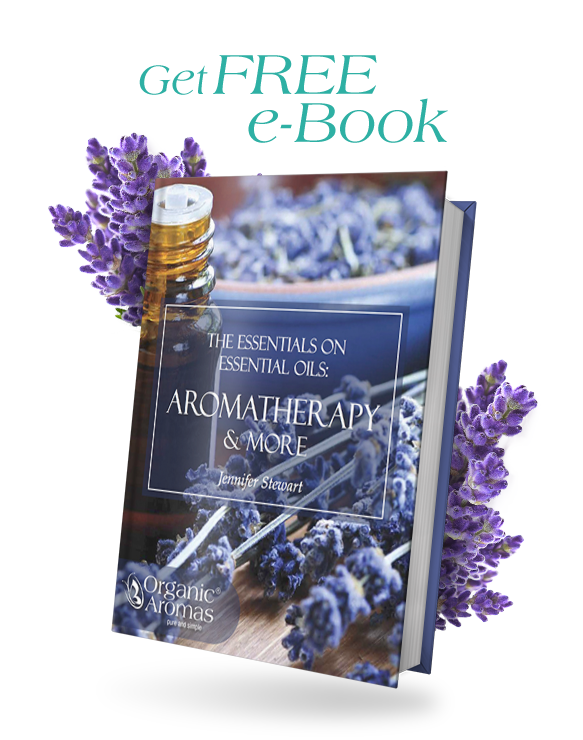
Sign Up to Get Your FREE
e-Book Here…
Meet the 7 Best Floral Essential Oils for Emotional Wellness
These six floral oils are among the most powerful natural remedies for stress and emotions. Each has its own scent profile and emotional signature, offering unique benefits for anxiety, mood balance, trauma recovery, and more.
Floral Essential Oils and Their Emotional Benefits
| Essential Oil | Key Emotional Benefits | Best Used For | Suggested Pairing |
|---|---|---|---|
| Chamomile | – Soothes anger and irritability – Brings emotional peace and stillness | Sensitivity, emotional overload, bedtime | Lavender, Helichrysum |
| Clary Sage | – Relieves mental fatigue – Encourages clarity and creative flow | Emotional fog, transition, spiritual insight | Rose Geranium, Neroli |
| Helichrysum | – Releases deep grief and trauma – Builds emotional resilience and protection | Inner healing, trauma recovery | Rose Geranium, Chamomile |
| Lavender | – Eases anxiety and emotional agitation – Promotes deep rest and emotional trust | Sleep support, general emotional calm | Neroli, Chamomile, Ylang Ylang |
| Neroli | – Calms anxiety and panic – Promotes emotional openness and peaceful sleep | Stress, nervous tension, heartbreak recovery | Lavender, Ylang Ylang |
| Rose Geranium | – Balances mood swings – Supports hormonal/emotional harmony | PMS, menopause, emotional imbalance | Clary Sage, Helichrysum |
| Ylang Ylang | – Lowers emotional intensity – Encourages self-love, sensuality, and joy | Emotional tension, overthinking, low self-worth | Neroli, Lavender, Patchouli |
Helichrysum: The Emotional Healer
Often called the “everlasting flower,” Helichrysum oil for emotional healing is prized for its golden scent and regenerative properties.
Emotional benefits:
- Supports inner resilience during grief, trauma, or emotional burnout
- Grounds scattered energy and soothes fear
- Encourages courage, forgiveness, and self-acceptance
Use in: Heart-centered meditation, grief work, or daily recovery routines. Combine with rose geranium for gentle heart-opening effects.
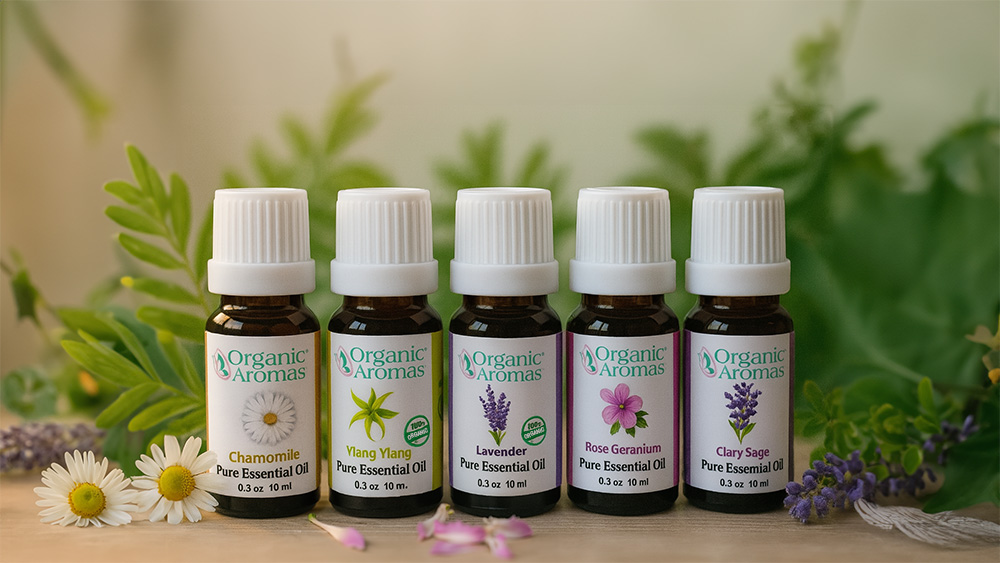
Neroli: Relief for Anxiety and Emotional Sensitivity
Neroli and lavender for emotional balance is a classic combination, especially for those with high sensitivity or stress overload. Neroli is distilled from bitter orange blossoms and offers a sweet-citrus floral note that promotes safety and peace.
Emotional benefits:
- Reduces nervousness, restlessness, and panic
- Helps restore sleep patterns disrupted by stress
- Creates a feeling of emotional safety and optimism
Use in: Evening routines, panic recovery kits, or during transitions like breakups or loss.
Rose Geranium: Hormonal Harmony and Emotional Stability
With rosy, herbaceous notes, rose geranium brings softness and stability. It’s especially helpful for hormone-related mood swings.
Clary sage and rose geranium benefits are often complementary—rose geranium soothes the emotional body, while clary sage clears mental fog.
Emotional benefits:
- Smooths mood swings, especially during PMS or menopause
- Invites compassion and emotional balance
- Calms feelings of overwhelm and irritation
Use in: Afternoon diffuser blends, massage oils for hormonal support, or self-care rituals.
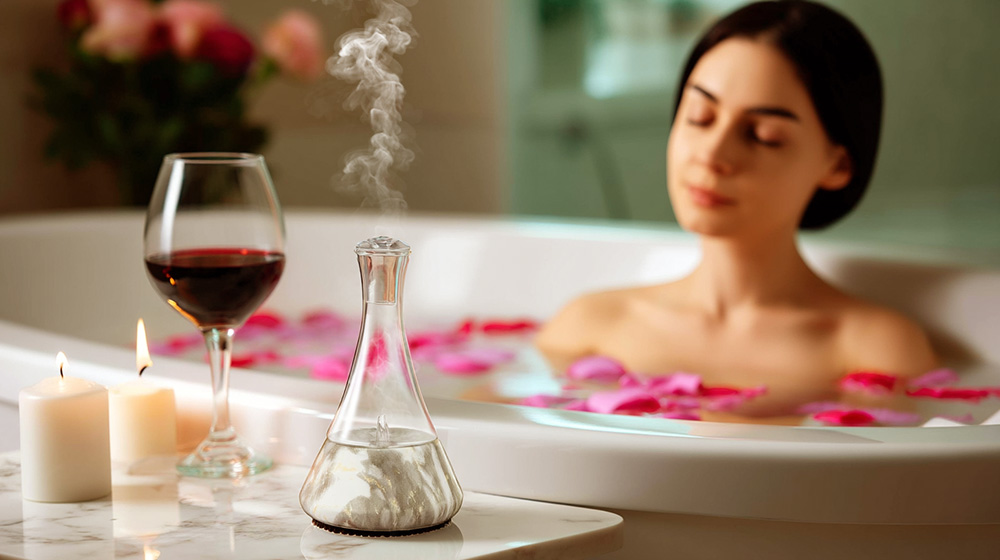
Clary Sage: Inner Vision and Letting Go
Clary sage is a favorite among creatives and spiritual seekers for its ability to release mental tension and inspire clarity.
Emotional benefits:
- Relieves mental fatigue and emotional congestion
- Encourages expressive healing and emotional truth
- Supports transitions and spiritual insight
Use in: Journaling, emotional release breathwork, or evening diffuser blends with lavender.
Rose Geranium Essential Oil 100% Pure
Origin: Egypt
Extraction Method: Steam Distillation
Plant Part: Leaves and Flowers
Lavender: The Classic Comforter
Among the best floral essential oils for anxiety, lavender remains the most well-known for its relaxing effects.
Emotional benefits:
- Calms anxious thoughts and racing mind
- Promotes restorative sleep and deep rest
- Supports emotional recovery and trust
Use in: Pillow sprays, baths, or as the foundational oil in any calming blend.
Chamomile: Gentle Relief for Irritability and Emotional Overload
With a light apple-like scent, Chamomile—especially the Roman variety—is ideal for sensitive individuals and children.
Emotional benefits:
- Eases frustration, emotional agitation, and restlessness
- Soothes emotional overwhelm and inner tension
- Promotes stillness, surrender, and peace
Use in: Bedtime blends, children’s room diffusers, or calming massage oils.
Ylang Ylang: The Soother of the Heart and Spirit
Known for its rich, exotic floral aroma, Ylang Ylang is often called the “flower of flowers” in Indonesia and is traditionally used in wedding rituals to promote harmony and joy. In emotional wellness, it is revered for its ability to calm emotional intensity and restore a sense of self-love.
Emotional benefits:
- Lowers stress and emotional overdrive during anxiety or frustration
- Encourages emotional openness, sensuality, and joy
- Softens harsh self-judgment and supports acceptance and inner peace
Use in: Evening rituals, self-love practices, or during times of emotional volatility. Blend with Neroli or Lavender for a calming and heart-expanding effect.
Emotional Concerns and the Best Floral Essential Oils to Support Them
When emotional turbulence strikes – whether it’s anxiety, grief, or emotional overwhelm—nature offers powerful tools to restore balance. This table helps you identify the best floral essential oils for anxiety, sadness, fatigue, or hormone-related mood swings, so you can choose the right support for how you feel today. Let scent guide you gently back to center.
| Emotional Concern | Recommended Floral Oils | Suggested Use |
|---|---|---|
| Anxiety / Panic | Neroli, Lavender, Chamomile | Diffusion, wrist roll-on |
| Grief or Heartache | Helichrysum, Rose Geranium | Meditation, chest massage |
| Hormonal Mood Swings | Rose Geranium, Clary Sage | Afternoon diffuser, abdominal massage |
| Low Self-Esteem / Sadness | Ylang Ylang, Neroli, Clary Sage | Evening bath, heart application |
| Mental Fatigue / Fog | Clary Sage, Lavender | Morning diffuser, journaling support |
| Sleep Issues | Lavender, Chamomile, Neroli | Bedtime diffuser, pillow spray |
Mind-Body-Spirit Benefits of Floral Essential Oils
Floral essential oils don’t just affect the surface – they influence your entire being. From calming the mind and relaxing the body to nurturing emotional resilience and spiritual clarity, these oils work across all levels. Explore this table to discover how each floral oil supports mental, physical, and energetic well-being, making it easier to match your needs with the right natural remedy.
| Essential Oil | Mind (Mental) | Body (Physical) | Spirit (Energetic/Emotional) |
|---|---|---|---|
| Helichrysum | Clears mental fog from trauma | Anti-inflammatory, skin recovery | Deep grief release, forgiveness, emotional courage |
| Neroli | Calms obsessive thought patterns | Lowers blood pressure, sleep aid | Hope, peace, divine connection |
| Rose Geranium | Stabilizes mood, reduces irritability | Balances hormones | Feminine energy, self-love, emotional harmony |
| Clary Sage | Enhances focus, clears stuck thoughts | Hormonal support, muscle tension | Intuition, clarity, creative flow |
| Lavender | Calms the mind, slows racing thoughts | Muscle relaxation, skin care | Trust, peace, heart-centering |
| Chamomile | Eases agitation and internal pressure | Soothes digestion and tension | Emotional surrender, safety, inner child nurturing |
| Ylang Ylang | Dissolves self-criticism, emotional heat | Supports libido and relaxation | Joy, sensuality, self-acceptance |
How to Use Floral Essential Oils: Best Pairings by Method and Intention
Not all essential oils are used the same way. Whether you need a restful diffuser blend, a heart-centered bath soak, or an energizing roll-on, this guide offers the best floral essential oil pairings by method and mood. Use this chart to design custom rituals that align with your emotional goals – morning, noon, or night.
| Method of Use | Recommended Oil Pairings | Ideal Time / Purpose |
|---|---|---|
| Nebulizing Diffuser | Lavender + Neroli | Evening calm, sleep support |
| Roll-On (pulse points) | Ylang Ylang + Rose Geranium | Self-love, hormone balance during PMS |
| Bath Blend | Clary Sage + Chamomile | Releasing tension, emotional overload |
| Meditation / Breathwork | Helichrysum + Rose Geranium | Grief healing, heart expansion |
| Journaling / Reflection | Clary Sage + Lavender | Clarity, inner focus |
How to Use Floral Essential Oils for Emotional Support
Whether you’re dealing with stress, sadness, anxiety, or burnout, floral oils can easily become part of your daily self-care. Here’s how to use essential oils for emotional support in safe and effective ways:
Diffusing for Emotional Reset
Add 5–10 drops of your favorite oil or blend to a nebulizing diffuser.
- Neroli + Lavender: For calm and sleep
- Clary Sage + Rose Geranium: For balance and clarity
- Helichrysum + Chamomile: For healing and emotional softness
Topical Use for Targeted Support
Dilute 1–2 drops in a carrier oil (like jojoba) and apply to:
- Pulse points (wrists, neck)
- Over the heart center
- Behind the ears or soles of the feet before sleep
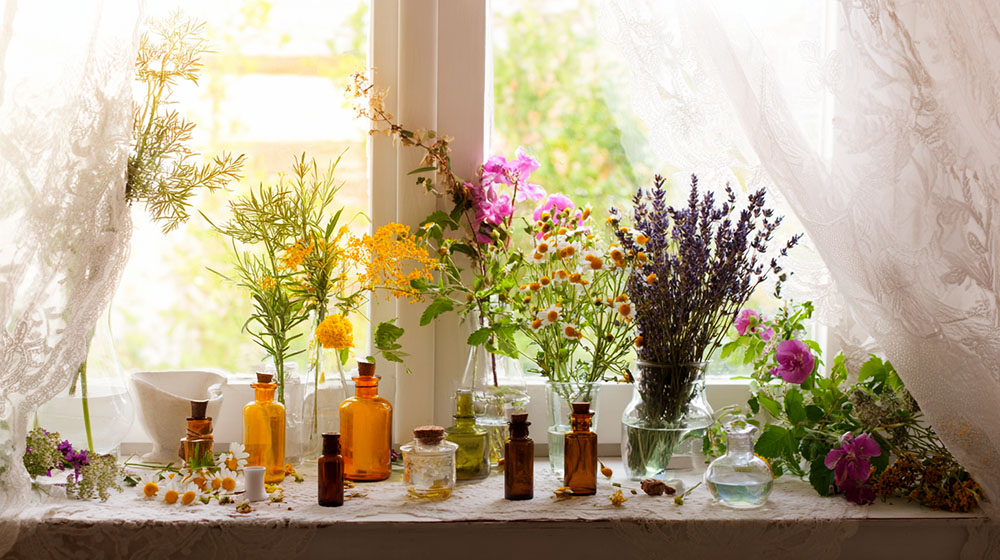
Aromatic Baths for Mood Reboot
Add 4–6 drops to a warm bath, mixed into honey or milk as a carrier.
This is especially helpful when you feel emotionally “stuck” or overstimulated.
Choosing Quality Floral Essential Oils
Since floral oils are delicate, quality matters deeply. For true results, always select:
- Steam-distilled, pure essential oils (not fragrance oils)
- Oils labeled with botanical names and country of origin
- Third-party purity tested oils
- Recyclable glass bottles with droppers
Avoid blends that list only “fragrance” or have unclear sourcing. Trustworthy aromatherapy starts with transparency.
Final Thoughts: Floral Oils as Gentle Companions for Emotional Healing
Life brings us many emotional waves – grief, stress, exhaustion, joy, transition. Floral essential oils offer support through them all. They’re not magic potions, but they are time-honored, plant-based tools for recovery, resilience, and reflection.
Whether you use them for anxiety, hormonal balance, or a simple moment of calm, these oils connect us to the wisdom of nature and the intelligence of our own bodies.
Each breath is a reset. Each drop, an invitation to come home to yourself.
Recommended Long-Tail Searches to Explore:
- Best floral essential oils for anxiety
- How to use essential oils for emotional support
- Neroli and lavender for emotional balance
- Helichrysum oil for emotional healing
- Clary sage and rose geranium benefits
- Calming floral essential oils for mood support
- Natural remedies for stress and emotions
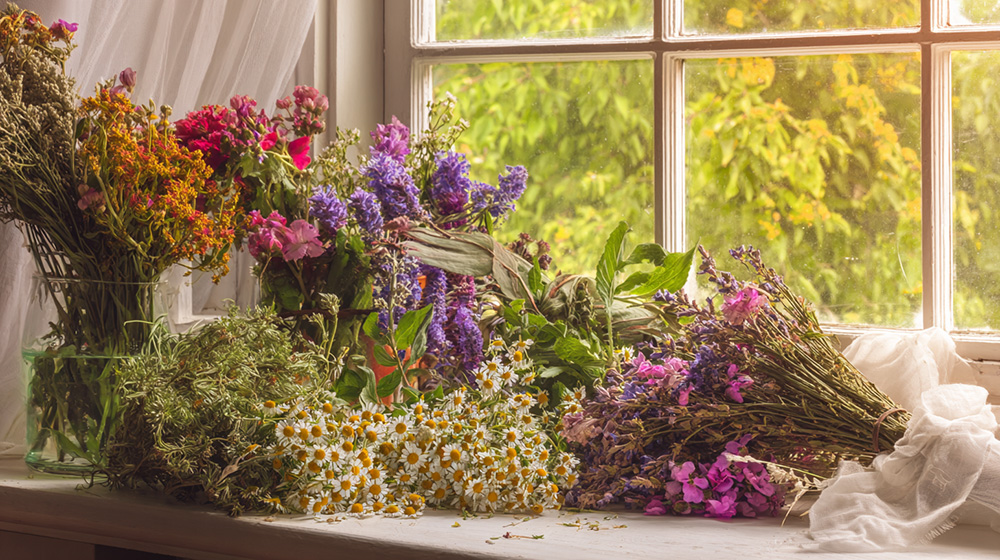
Frequently Asked Questions about Floral Essential Oils
- What are the emotional benefits of floral essential oils?
- Floral essential oils like Helichrysum, Neroli, Rose Geranium, Clary Sage, Lavender, and Chamomile help reduce stress, calm the nervous system, uplift mood, ease emotional trauma, and support sleep and clarity. Each oil carries a unique emotional resonance.
- Which floral oils are best for anxiety and restlessness?
- Neroli, Lavender, and Chamomile are ideal for calming anxiety. Neroli soothes the heart and promotes peace, Lavender eases tension and supports sleep, while Chamomile reduces irritability and emotional overstimulation.
- Can I blend floral oils together for emotional support?
- Yes. You can blend oils like Rose Geranium and Helichrysum for heart healing, or Clary Sage and Neroli for clarity and mood balancing. Always dilute with a carrier oil before topical use or use in a diffuser for atmospheric support.
- How should I use floral essential oils in daily life?
- Diffuse 5–10 drops using a nebulizing diffuser, apply diluted oils to pulse points, add to a warm bath, or use during meditation or journaling. Each method supports different aspects of emotional well-being.
- Are floral oils safe for children or sensitive individuals?
- Chamomile and Lavender are among the gentlest and are generally safe for children and sensitive users when properly diluted. Always perform a patch test and avoid direct application near the face of young children.
- How can I be sure I’m buying pure floral essential oils?
- Look for oils that are steam-distilled, labeled with their botanical name, sourced ethically, and tested by third parties for purity. Avoid synthetic fragrance oils or unlabeled blends. Choose glass packaging with droppers for precision.
- What makes Helichrysum unique among floral oils?
- Helichrysum, also known as Immortelle, is prized for its emotional healing properties. It supports release of deep emotional wounds and offers grounding for those dealing with trauma, grief, or long-term stress.
- Can floral essential oils improve sleep quality?
- Yes. Oils such as Lavender, Chamomile, and Neroli are scientifically linked to improved sleep quality. Diffusing these oils before bed or using them in a bath can promote deeper, more restorative rest.

